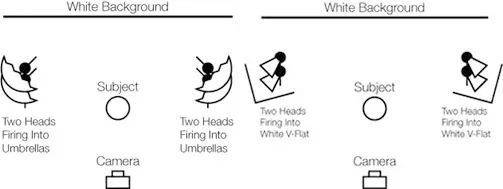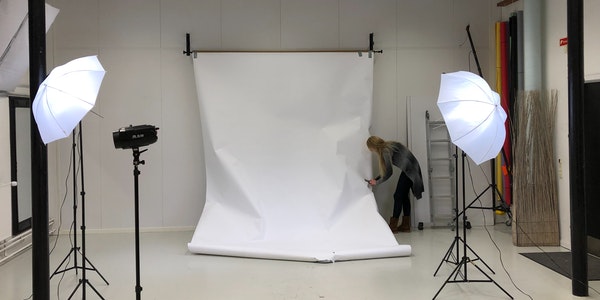Table of Contents
How to take a good white background
Antonioni’s L’eclisse has a very different feel.
The highlight of this movie is that Monica Vitti’s clothes have a natural elegance.
Of course, clothing is not the focus of the plot, but many details and exquisiteness can be seen in it.
It can be found from Rome in the 1960s that Italians are very well-dressed even in daily life. It’s not overly showy, it’s elegant and soft, a very casual chic.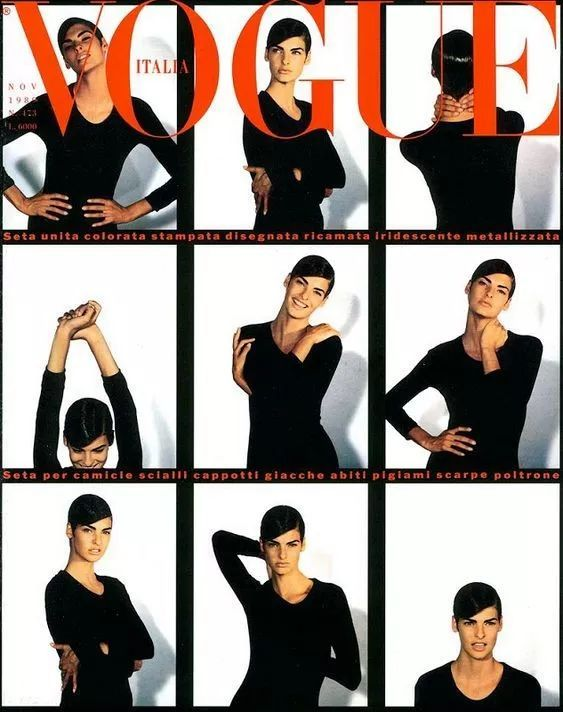
Therefore, the Italian version of VOGUE is almost the best.
When Italians talk about “fashion”, it is entirely from the perspective of art or art history. In addition to being very good at photography, they also cite a lot of art references to discuss style.
It also shows a sense of taste and culture inadvertently.
How to take a good white background?
Simply put, if you want the background to appear beautiful and pure white, you must meet several basic conditions—
A seamless white background (wall, roll paper or other white fabric). Many times, the photographer will lay a white plate on the ground, which can provide a certain amount of reflection and avoid stepping on the dirty background. 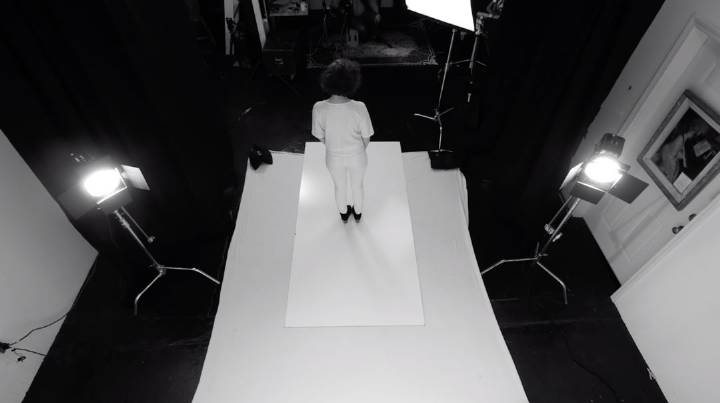 2. At least two flashes, one on each side of the background. Because only one light is used to illuminate one side or the center, it usually causes the background to have a gradual change, showing the effect from white to gray.
2. At least two flashes, one on each side of the background. Because only one light is used to illuminate one side or the center, it usually causes the background to have a gradual change, showing the effect from white to gray. 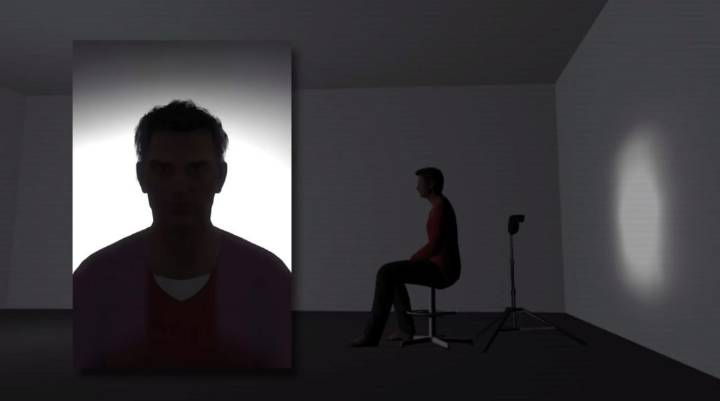
- The person being photographed should keep a certain distance from the background, so that the exposure can be controlled separately for both, while avoiding excessive reflections on the background and disturbing the person.
Let’s take a look at the two feelings first.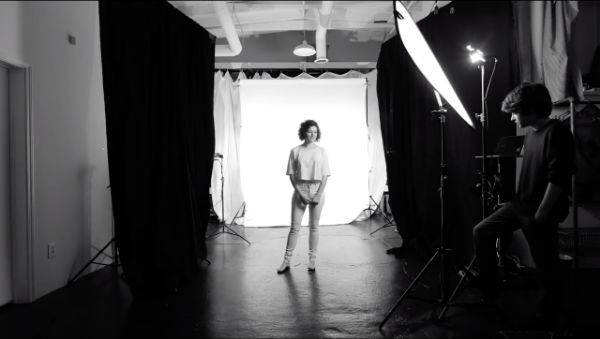
When the distance between the character and the background is appropriate (one main light and two background lights)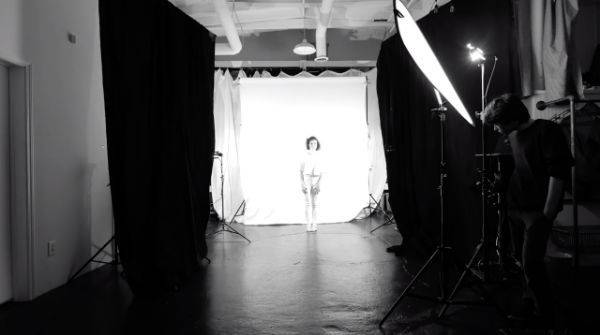
How to set the background light reasonably
The background light is usually used to illuminate the background, and should generally be set to the same intensity as the main light or a little higher.
Let’s compare the basic effects first
Don’t use backlight vs. use backlight
When the backlight is not used, we see that the background is gray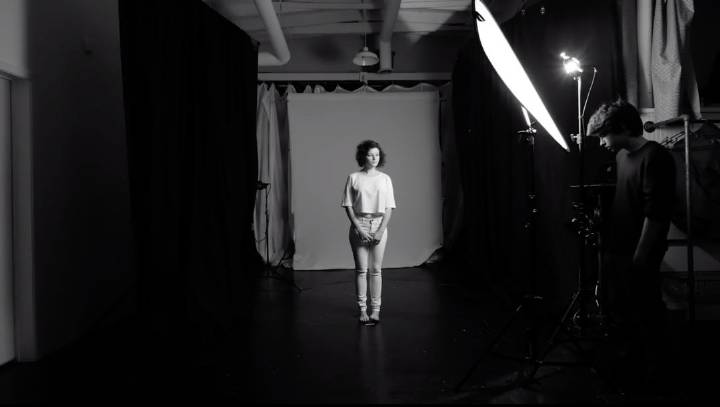
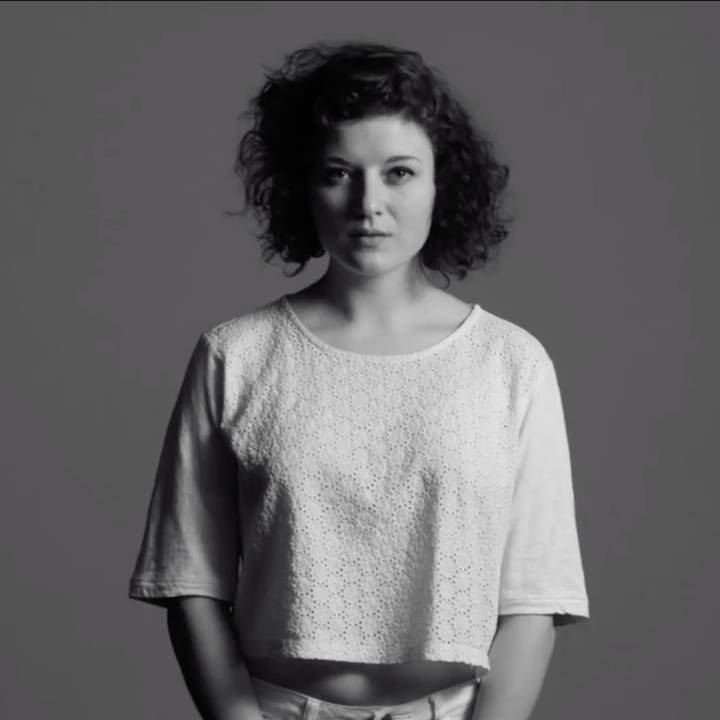
Take a look at the single-lamp lighting under no background light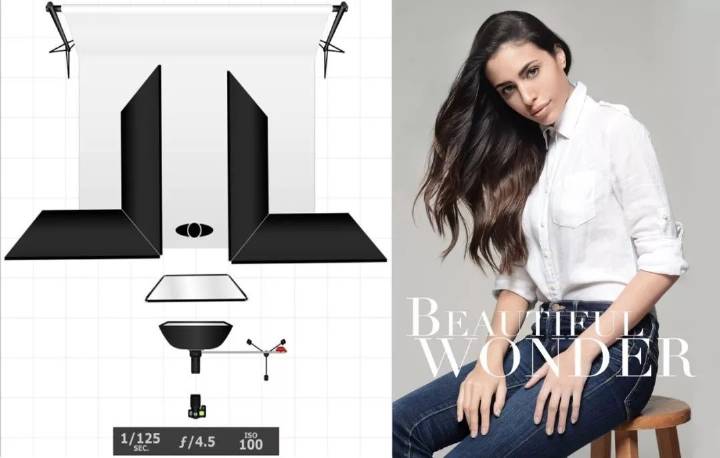
Look at the double-lamp lighting under no background light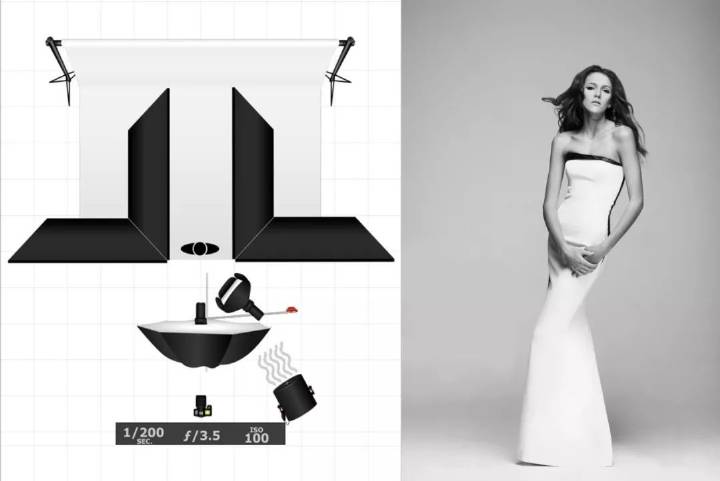
When using the background light, we see that the background is white, using 1 main light and 2 background lights, with white walls on both sides.
With the help of this example, we can compare the actual effect of background brightness changes.
What we need to know is that if the background light is too strong, the reflected light will surround the person and reduce the contrast, making the edges blurry.
If the background light is too weak, the background will appear gray or uneven, requiring more post-processing.
How to use reflector reasonably
For the following effect, try to add a reflector. It can effectively eliminate shadows and provide fully reflected soft light.
This is usually our usual idea of shooting commercial films.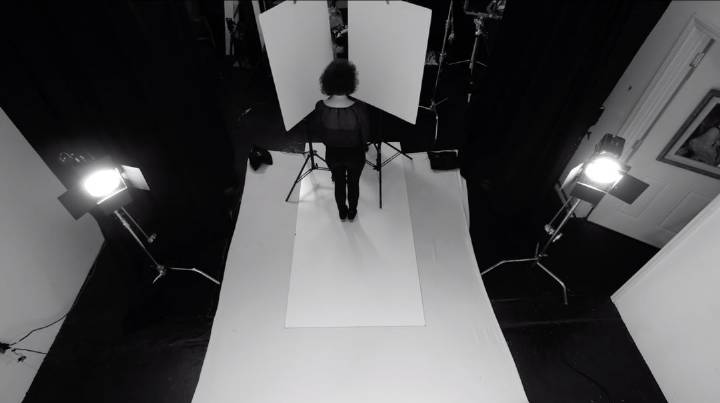
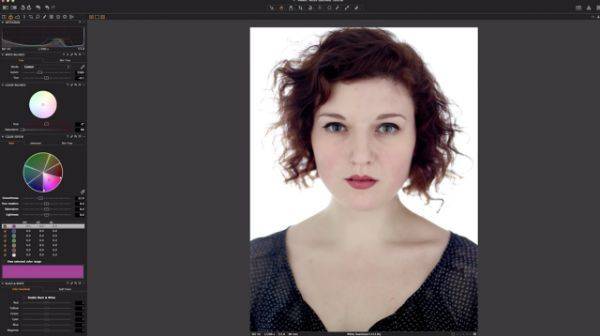
Let’s try a larger V-shaped reflector, 2 backlights and 4 V-shaped reflectors.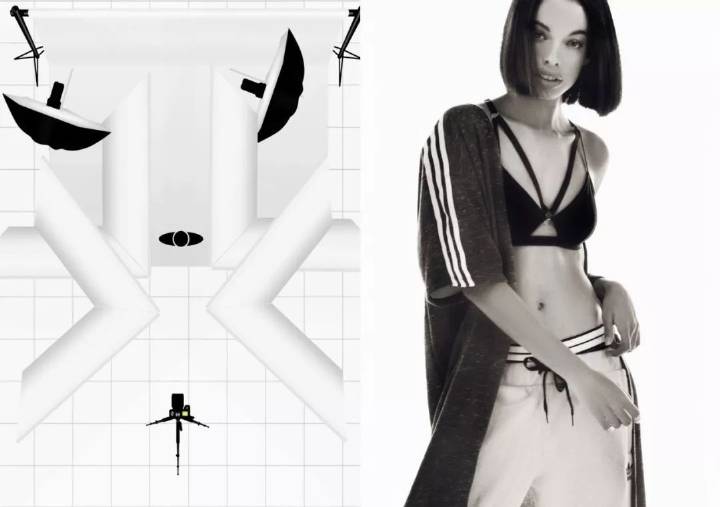
Next, try to add the character’s main light. With the aid of the V-shaped reflector and the background light, we will find that the whole picture is completely lit, and the characters are also shaped by vivid light and shadow.
For example, a front high-mounted main light, plus two large V-shaped reflectors “clamped” on both sides of the character, fully reflects the light to the main body.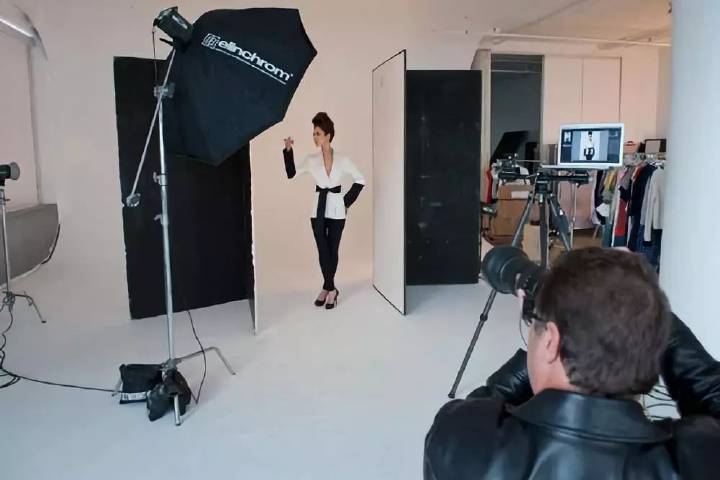
Use two lights to illuminate the background, showing an almost all-white effect.
If the backlight is not used, what effect can be taken?
As we mentioned earlier, in order to obtain a pure white background with neither hot spots nor shadows, two lights are generally required to illuminate the background evenly from the left and right sides.
However, nothing is absolute.
If the conditions are limited, it is ok to need two lights to take into account the characters and the background. For example, it is ok to narrow the distance between the characters and the background, and at the same time use a reflector to fully reflect the light.
In the picture below, we only use two lights, and the characters are close to the background, so unsightly shadows will appear on the background.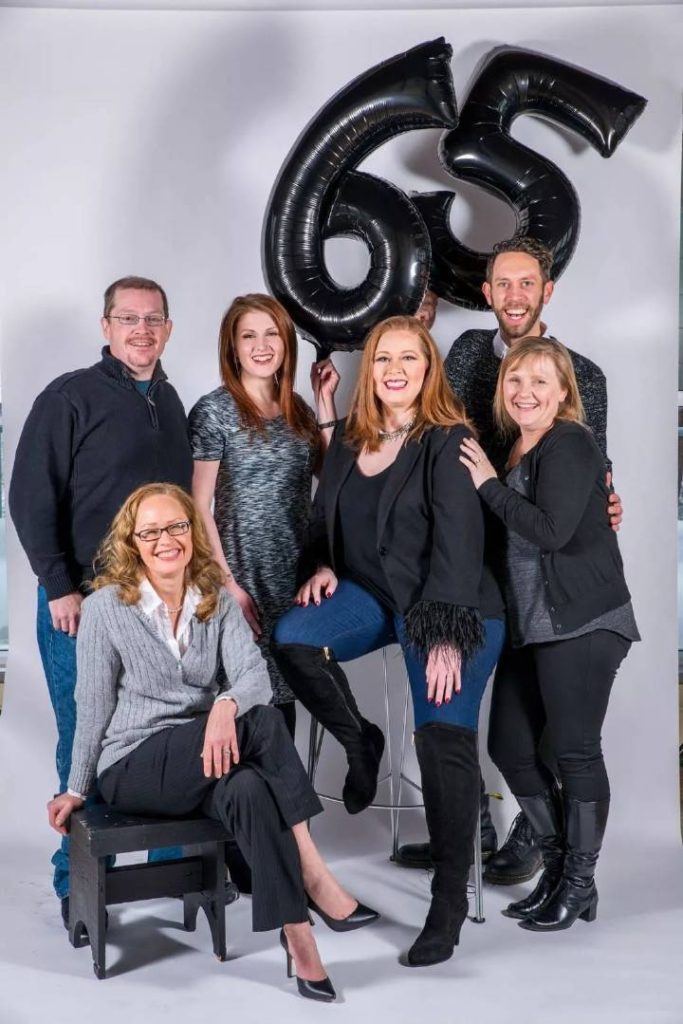
Improve methods
-
- Try to put the reflector between the light and the character, it can effectively reduce the shadows and balance the background, but sometimes it still can’t fully eliminate the shadows.
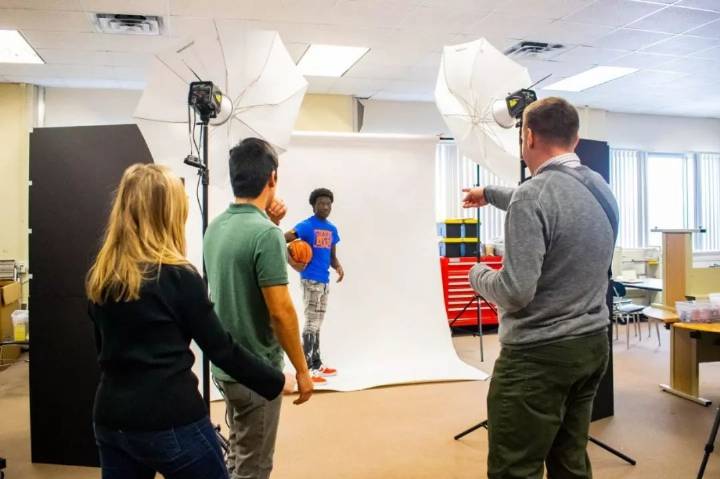
- If we place the reflector directlyon the lamp, we will find that almost all the light is confined between the background and the reflector, so that it can be fully reflected and uniformly illuminated.
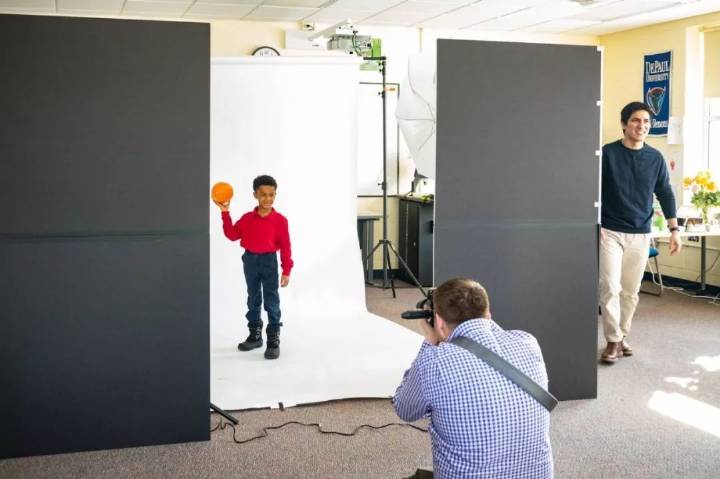
- Try to put the reflector between the light and the character, it can effectively reduce the shadows and balance the background, but sometimes it still can’t fully eliminate the shadows.
Seeing this, some friends will ask: “If it’s not studio shooting, how to build a white background in a normal environment?
1) white walls
Use existing white walls indoors or outside the building. Of course, if you are shooting the whole body, the line of intersection between the wall and the ground will appear in the screen, and shooting a half-length or portrait is completely sufficient.
2) white light-transmitting material
Hang a transparent curtain on the background frame, and place a flashlight behind it. The light shines on the window, causing it to reflect back to the curtain, thus transforming a small lamp into a beautiful large light source.
3) V-shaped reflector
The portable reflector is a good off-the-shelf product. Many photographers use it directly as a white background.
4) Softbox or reflective umbrella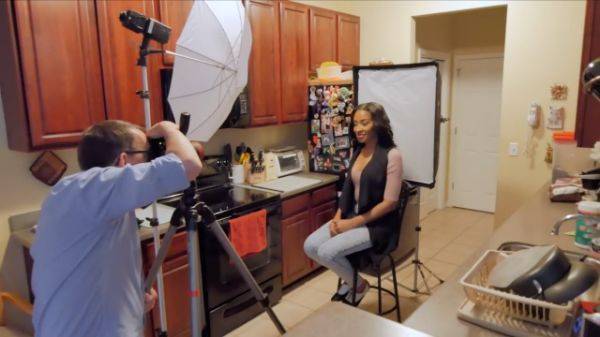
In order to prevent glare interference, put the two reflectors close, leaving an opening in the middle for the camera to take pictures. A warm-tone constant light illuminates the V-shaped reflector on the opposite side, coating the body with a slightly warm glow.
Two major difficulties in shooting white background
How to create high-profile lighting to effectively eliminate bad shadows?
How to manage and avoid the negative effects that accompany high-profile lighting?
If the exposure ratio of the background to the characters is too large or too small, it will have an adverse effect.
For example, glare appears in the camera, edge contrast is reduced, background exposure is uneven and faded (low saturation). If we want to achieve accurate exposure in front of a white background, we must strictly control our settings.
There are many ways to evenly illuminate the white background.
Generally speaking, two lights are enough. But for more (large) subjects, or more precise background effects, most photographers prefer four background lights usually. This avoids possible hot spots and shadows.
For example, use four plus small standard flashes to evenly illuminate the background.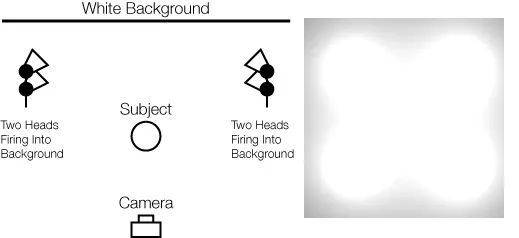
Or use four reflector or V-shaped reflector flashes to evenly illuminate the background.
What should we pay attention to when using four backlights?
- Consider the two lights on the same side as a whole. The left and right sets of lights should be balanced, that is, the distance and angle from the background are the same. The power of the two sets of lamps should be the same. And use a light meter for accurate measurement.
- The background covered by the frame varies greatly. Photographers often adjust the position of the light accordingly so as for best shooting effect. For example, multi-person shooting obviously requires more light width than single-person portraits. The height of the subject determines the height of the light.
